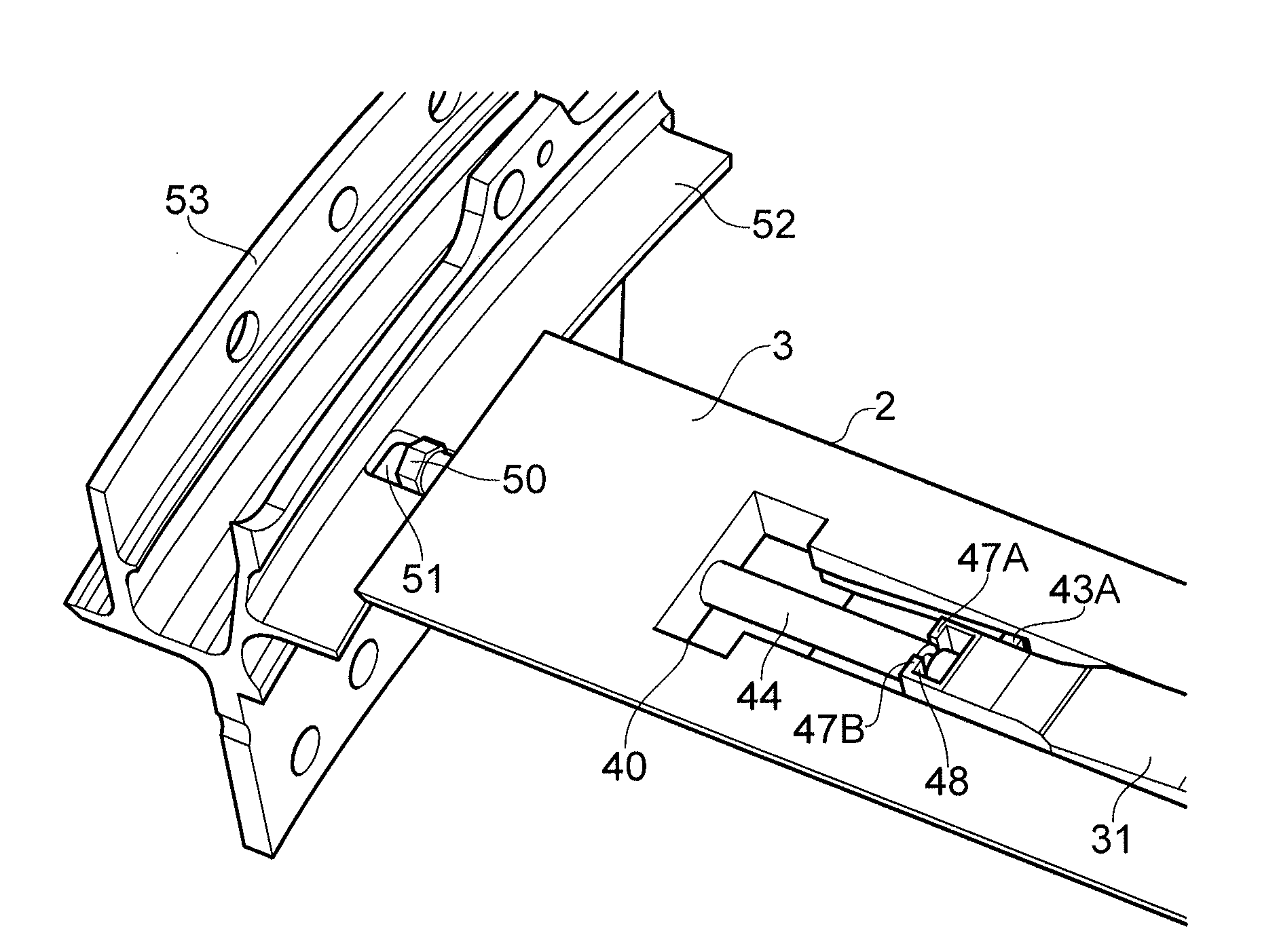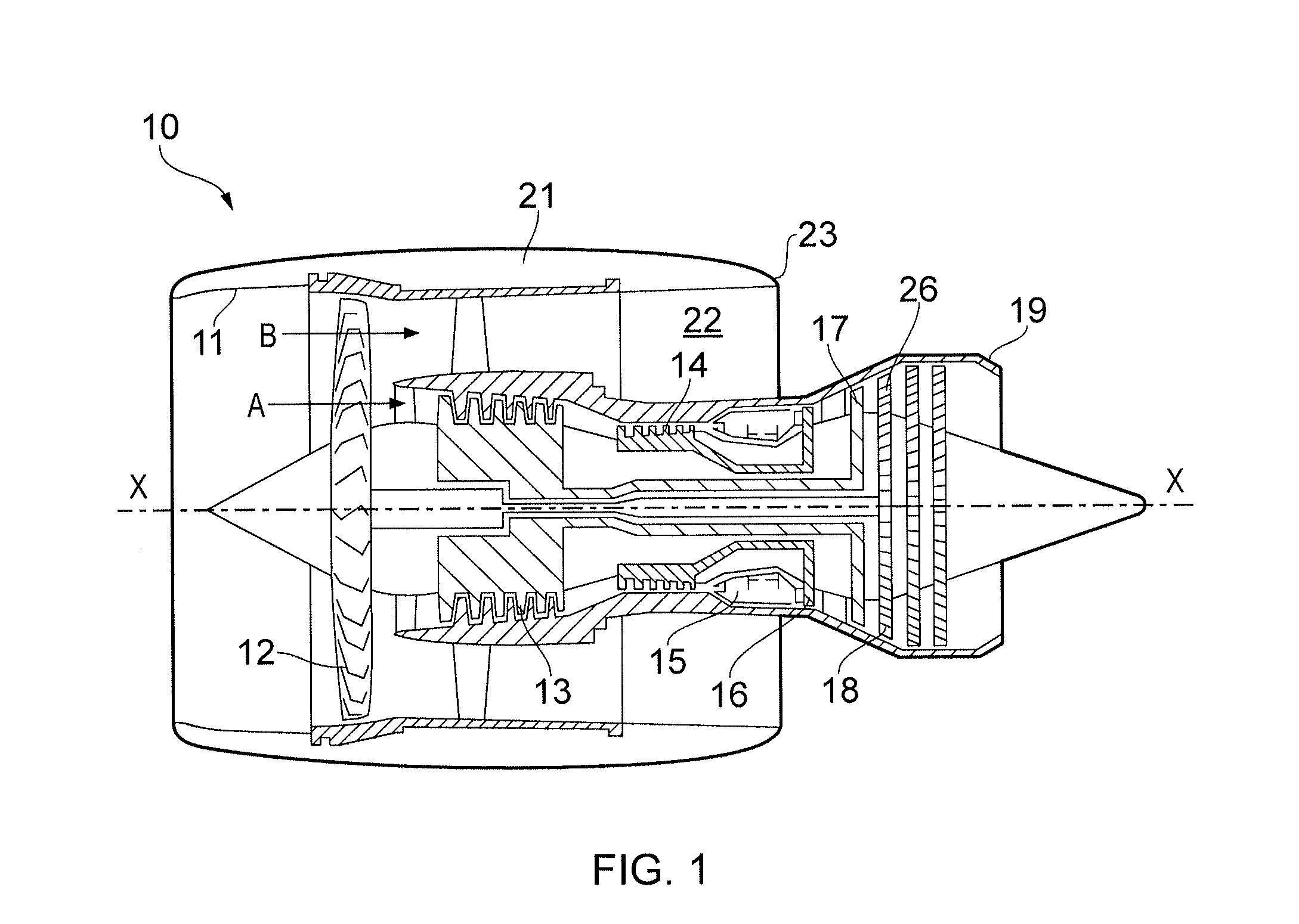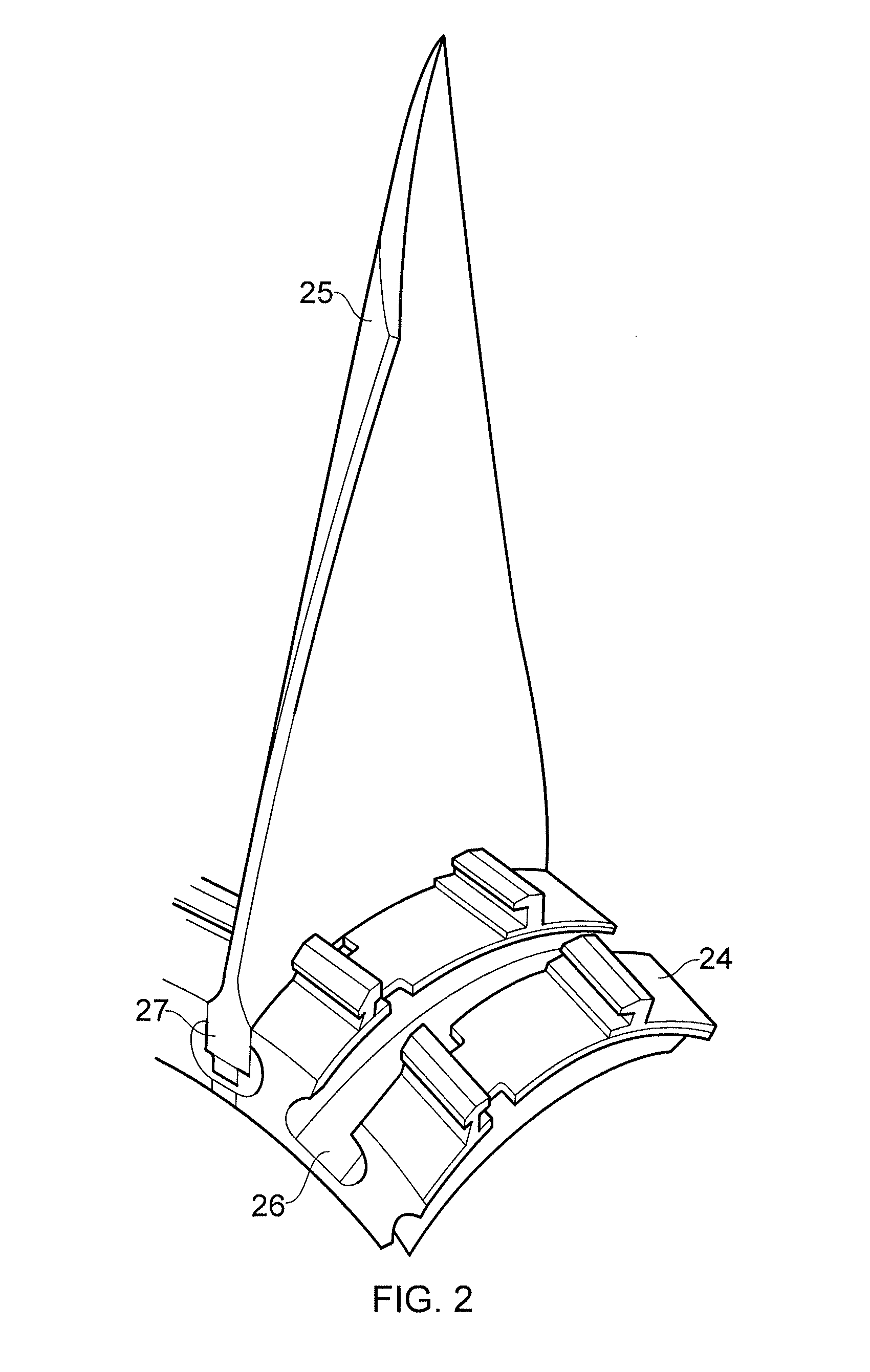Retention device
a technology of a retention device and a spring element, which is applied in the direction of sustainable transportation, mechanical equipment, machines/engines, etc., can solve the problems of unpredictability of the radial force applied by the slider b>28/b>, the loss of lubricant between the mating faces, and the risk of damage, etc., to reduce the weight of the retention device and increase the stiffness of the spring elemen
- Summary
- Abstract
- Description
- Claims
- Application Information
AI Technical Summary
Benefits of technology
Problems solved by technology
Method used
Image
Examples
first embodiment
[0055]As shown in FIGS. 4 to 7, the present invention provides a retention device 1 for applying a radial force to a component such as a rotor blade (not shown) held within a slot in a rotor disc.
[0056]The device 1 comprises a body 2 having an outer surface 3 for facing the component. The outer surface 3 has a recess 4 having a recess base 5.
[0057]The recess base comprises a first ramped surface 6A extending from a lower end 7A to an upper end 8A. The recess base further comprises a second ramped surface 6B extending from a lower end 7B to an upper end 8B. The first and second ramp surfaces 6A, 6B extend laterally / axially within the recess 4 with both lower ends 7A, 7B of the ramp surfaces 6A, 6B proximal a first lateral end 9 of the body 2 and both upper ends 8A, 8B distal the first lateral end 9 of the body 2. The lower end 7B of the second ramp surface 6B is proximal the upper end 8A of the first ramp surface 6A. The first and second ramp surfaces 6A, 6B have the same incline.
[00...
second embodiment
[0075]FIG. 8 shows the present invention in which the first and second ramp surfaces 6A′, 6B′ extend laterally, parallel to one another across the recess 4′ with both lower ends 7A′, 7B′ of the ramp surfaces 6A′, 6B′ located proximal the first lateral end 9′ of the body 2′.
[0076]The recess 4′ is defined by transverse end walls 54A, 54B and extends to the transverse edges of the body 2′ (i.e. there are no laterally extending walls defining the recess). The recess base 5′ further comprises a channel 55.
[0077]The outer surface 3′ of the body 2′ further comprises two cavities 56A, 56B extending laterally either side of the recess 4′. This is to reduce the amount of material and hence the weight of the retention device.
[0078]The spring element 30′ has a transverse dimension that substantially matches the transverse dimension of the body 2′. This allows a larger transverse cross-sectional profile and increased stiffness of the spring element 30′.
[0079]The spring element 30′ has two downwa...
PUM
 Login to View More
Login to View More Abstract
Description
Claims
Application Information
 Login to View More
Login to View More - R&D
- Intellectual Property
- Life Sciences
- Materials
- Tech Scout
- Unparalleled Data Quality
- Higher Quality Content
- 60% Fewer Hallucinations
Browse by: Latest US Patents, China's latest patents, Technical Efficacy Thesaurus, Application Domain, Technology Topic, Popular Technical Reports.
© 2025 PatSnap. All rights reserved.Legal|Privacy policy|Modern Slavery Act Transparency Statement|Sitemap|About US| Contact US: help@patsnap.com



